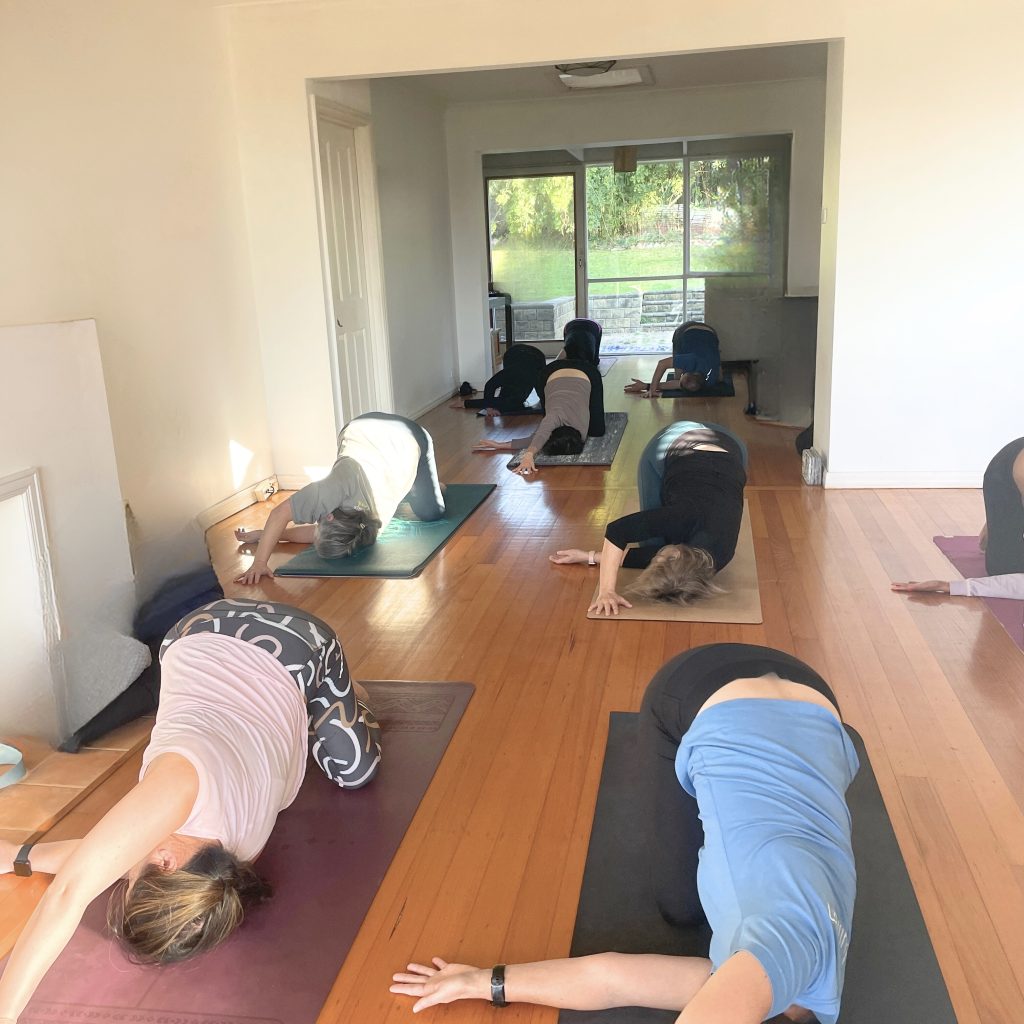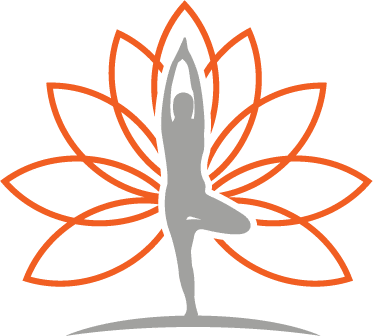Welcome to the world of yoga, a practice that offers benefits touching on physical, mental, and spiritual aspects of life. As you embark on this journey, you may encounter unfamiliar terms and phrases. This blog aims to demystify key yoga concepts, helping you feel more at ease in your yoga class and deepen your connection to the practice.
Before we begin, I’d like to share a personal insight: while I strive to use accessible language in my classes, some Sanskrit terms have become so ingrained in my teaching that they occasionally slip out subconsciously. Rest assured; these terms are simply part of yoga’s rich linguistic heritage.
Understanding Yoga Styles
Before we talk about the various styles of yoga, it’s important to note that traditionally, yoga is simply yoga. The differentiation into various styles is a relatively recent development, occurring primarily over the last 60-70 years. These different methods of teaching yoga have emerged to cater to diverse needs and preferences in the modern world, but at their core, they all share the same fundamental objective.
The ultimate goal of yoga, regardless of style, is to shift stagnant energy, create greater awareness in the mind, breath, and body, and ultimately cultivate a strong body and a stress-free mind. Each style offers a unique approach to achieving this common aim.
With that in mind, here are some of the more popular yoga styles you might encounter:
- Hatha Yoga: The term “hatha” means “force” in Sanskrit, but this refers to an internal energetic process rather than physical exertion. Hatha yoga aims to unite two vital energies within the body: prana (upward-flowing life force) and Apana (downward-flowing energy). This union is believed to occur at the navel centre, creating a third energy called Udana that rises through the spine, potentially leading to higher states of consciousness. To achieve this energetic balance, hatha yoga employs various techniques such as physical postures, breathing exercises and hand gestures. Despite its forceful-sounding name, Hatha yoga is typically practiced gently.Hatha Yoga is technically a general category encompassing all yoga styles. However, in modern western Yoga, Hatha yoga has emerged as a style of yoga where classes are typically slower-paced, making them ideal for beginners and those seeking a good introduction to basic yoga poses.
- Vinyasa Yoga: Derived from Sanskrit, “Vinyasa” means “to place in a special way” and refers to a flowing sequence of poses connected by breath. This style involves fluid movements and transitions between poses, creating a more dynamic practice. It’s well-suited for those seeking a physically active and varied yoga experience.
- Ashtanga Yoga: This physically demanding style follows a specific sequence of poses, maintaining consistency in each session. Traditionally, it includes six series of specially sequenced yoga poses taught progressively as students advance. Ashtanga appeals to practitioners who appreciate routine and structure in their practice.
- Iyengar Yoga: Named after B.K.S. Iyengar, this form of yoga is known for its emphasis on precise alignment and the use of props. Props like belts, blocks, and ropes make it accessible to beginners, seniors, and those with physical limitations. Iyengar yoga encourages students to progress gradually in each pose, focusing on proper form and alignment.
- Bikram/Hot Yoga: Popularized by Bikram Choudhury, Bikram yoga consists of a series of 26 poses performed in a heated room. Hot Yoga, similarly practiced in a heated environment, may involve varying poses and sequences depending on the instructor.
By understanding these different approaches, you can choose a style that resonates with your personal goals and preferences. Remember, though, that whichever style you choose, you’re participating in a practice that has been refined over thousands of years to promote physical, mental, and spiritual well-being.
Common Poses and Their Names
Yoga poses, or “asanas,” form the foundation of every yoga practice. Each pose has a unique name, often derived from Sanskrit, reflecting the practice’s ancient Indian roots. Understanding these terms can help you follow class instructions more effectively and deepen your practice.
Samasthiti: Also known as “Equal Standing” this fundamental pose teaches stability and poise. It serves as a starting point for many standing poses and helps establish proper alignment and grounding. Samasthiti encourages practitioners to find their centre and prepare for the yoga session ahead.
Adho Mukha Svanasana (Downward Facing Dog): One of the most recognizable yoga poses, this inverted V-shape provides a comprehensive stretch for multiple parts of the body. It strengthens the arms and legs while stretching the hamstrings, shoulders, calves, arches, hands, and spine. Regular practice of this pose can improve overall body awareness and flexibility.
Chaturanga Dandasana (Four-Limbed Staff Pose): Often part of the “vinyasa” sequence, this pose resembles a low plank position with the arms bent at 90 degrees. It’s crucial for building strength in the arms, shoulders, and core. Proper alignment is key to avoiding strain and reaping the full benefits of this challenging pose.
Balasana (Child’s Pose): This restful pose serves multiple purposes in a yoga practice. It can be a neutral starting position, a resting pose between more intense sequences, or a counterpose to relieve tension. Balasana encourages deeper breathing and relaxation while gently stretching the hips, thighs, and ankles.
Key Phrases and Concepts in Yoga Practice
The vocabulary of yoga extends beyond pose names. Understanding these terms can enrich your practice by aligning your breath, focus, and intentions with the physical movements.
Pranayama: This term combines two Sanskrit words: “Prana,” meaning life force (particularly breath), and “Yama,” meaning control. Pranayama practices involve specific techniques for controlling the breath and regulating vital energy in the body. These breathing exercises are fundamental to yoga, improving focus and strengthening the mind-body connection.
Drishti: In Sanskrit, “drishti” means “focused gaze” or “point of focus.” It’s a technique used in yoga to develop concentrated intention and improve balance. Each pose typically has a specific drishti, such as the tip of the nose, the navel, or a distant point. By maintaining a steady gaze, practitioners can enhance their concentration, reduce distractions, and deepen their mind-body connection during practice.
Namaste: A gesture of respect and a common greeting in India, in the yoga context, “Namaste” involves pressing the palms together at the heart centre, closing the eyes, and bowing the head. It can be translated as “the divine in me bows to the divine in you” and is typically expressed at the beginning and end of a class as a sign of mutual respect and gratitude.
Savasana: Sometimes referred to as “Corpse Pose,” Savasana is the final resting pose in most yoga classes. Practitioners lie supine, arms and legs comfortably apart, with eyes closed. The pose aims to induce complete relaxation of body and mind, allowing one to integrate the benefits of the preceding practice. Despite its apparent simplicity, Savasana is considered one of the most challenging poses due to the mental discipline required to remain in a state of alert relaxation.
The Broader Context of Yoga
While physical postures are a significant component, yoga encompasses a broader philosophy and lifestyle. Here are a few concepts you might encounter:
Chakras: In yogic tradition, chakras are believed to be energy centres within the body. There are seven main chakras, each associated with specific physical, emotional, and spiritual aspects of our being. Many yoga practices aim to balance and align these energy centres, promoting overall health and well-being.
Meditation: Many yoga classes incorporate meditation practices, which can range from brief moments of mindfulness to longer, guided sessions. Regular meditation has been shown to reduce stress, improve focus, and promote overall well-being.
Mindfulness: This concept involves being fully present and engaged in the current moment. In yoga, mindfulness is cultivated through focused attention on breath, bodily sensations, and the present experience, free from judgment or distraction.
The Significance of “Jai Gurudev”
You may notice that I conclude each class with the phrase “Jai Gurudev.” This expression holds deep personal significance. As I utter these words, I bow my head in respect to my Guru, acknowledging the invaluable guidance that has shaped my yoga journey and enabled me to share this practice with others.
“Jai” translates to “victory” or “glory to,” while “Gurudev” means “divine teacher.” By saying “Jai Gurudev,” I’m not only honouring my personal teacher but also paying homage to the entire lineage of yoga instructors who have preserved and transmitted this ancient wisdom. It serves as a reminder of our connection to a practice that transcends individual experience.
Embracing Your Yoga Journey
As you begin or continue your yoga practice, remember that understanding comes with time and experience. Don’t be discouraged if the terminology seems overwhelming at first. Instead, focus on your breath, listen to your body, and approach each class with an open mind and heart.
I invite you to deepen your practice with us at Repose Yoga in Mount Waverley. Our studio offers a range of classes suitable for all levels, from beginners to advanced practitioners. Your experienced Yoga teacher is committed to guiding you through your yoga journey with expertise, patience, and individualized attention.
At Repose Yoga, we believe in creating a welcoming and inclusive environment where everyone can explore the benefits of yoga. Whether you’re seeking physical fitness, stress relief, or spiritual growth, our diverse class offerings cater to a variety of goals and preferences.
To learn more about our class schedule and pricing please visit our website at https://www.reposeyoga.com.au. We have an Introductory Offer for our new students, allowing them to experience our teaching style and studio atmosphere without a commitment.
Remember, yoga is a personal journey of self-discovery and growth. We look forward to supporting you on this path at Repose Yoga, where every breath and every movement brings you closer to balance, strength, and inner peace.





